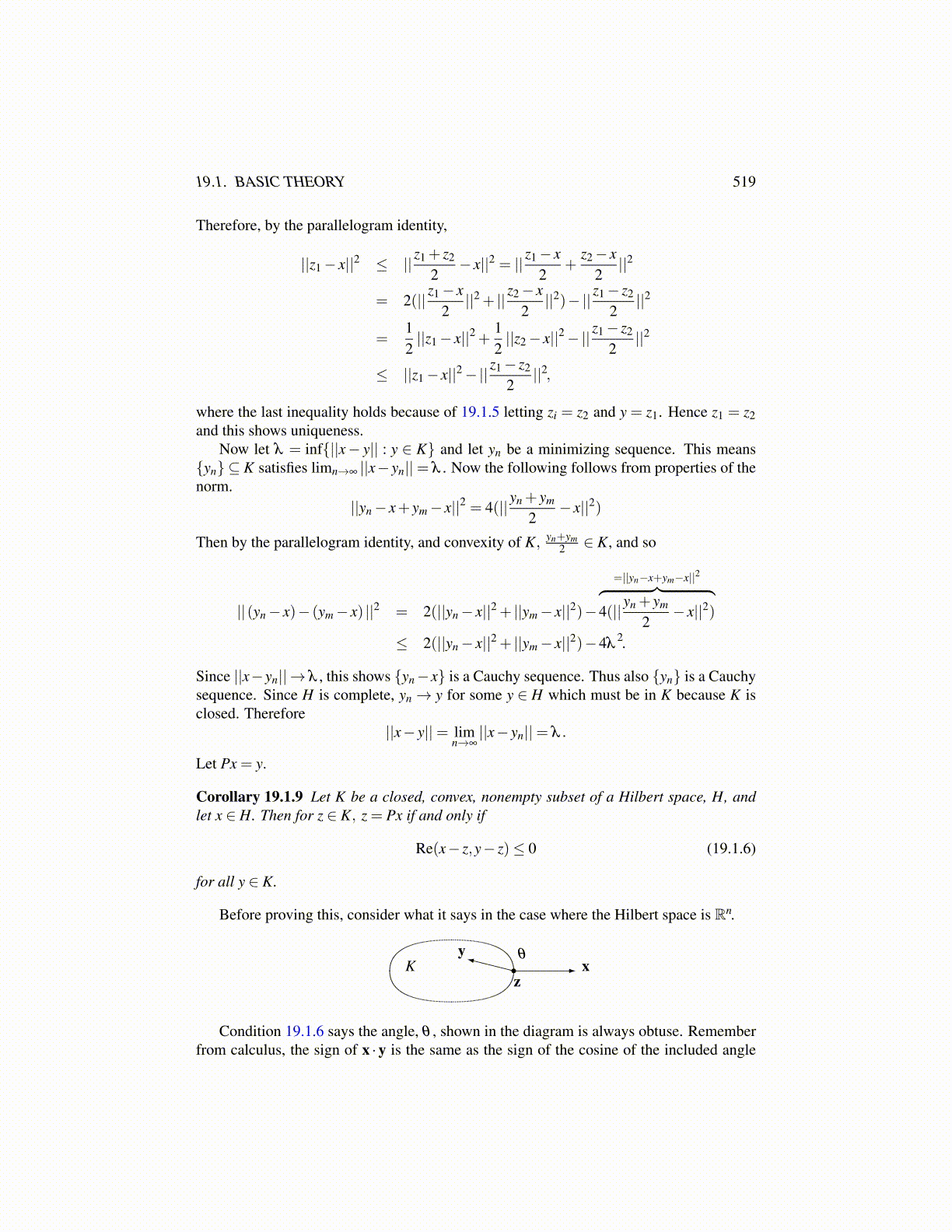
19.1. BASIC THEORY 519
Therefore, by the parallelogram identity,
||z1− x||2 ≤ || z1 + z2
2− x||2 = || z1− x
2+
z2− x2||2
= 2(|| z1− x2||2 + || z2− x
2||2)−|| z1− z2
2||2
=12||z1− x||2 + 1
2||z2− x||2−|| z1− z2
2||2
≤ ||z1− x||2−|| z1− z2
2||2,
where the last inequality holds because of 19.1.5 letting zi = z2 and y = z1. Hence z1 = z2and this shows uniqueness.
Now let λ = inf{||x− y|| : y ∈ K} and let yn be a minimizing sequence. This means{yn} ⊆ K satisfies limn→∞ ||x−yn||= λ . Now the following follows from properties of thenorm.
||yn− x+ ym− x||2 = 4(||yn + ym
2− x||2)
Then by the parallelogram identity, and convexity of K, yn+ym2 ∈ K, and so
||(yn− x)− (ym− x) ||2 = 2(||yn− x||2 + ||ym− x||2)−
=||yn−x+ym−x||2︷ ︸︸ ︷4(||yn + ym
2− x||2)
≤ 2(||yn− x||2 + ||ym− x||2)−4λ2.
Since ||x−yn|| → λ , this shows {yn−x} is a Cauchy sequence. Thus also {yn} is a Cauchysequence. Since H is complete, yn→ y for some y ∈ H which must be in K because K isclosed. Therefore
||x− y||= limn→∞||x− yn||= λ .
Let Px = y.
Corollary 19.1.9 Let K be a closed, convex, nonempty subset of a Hilbert space, H, andlet x ∈ H. Then for z ∈ K, z = Px if and only if
Re(x− z,y− z)≤ 0 (19.1.6)
for all y ∈ K.
Before proving this, consider what it says in the case where the Hilbert space is Rn.
Ky θ
xz
Condition 19.1.6 says the angle, θ , shown in the diagram is always obtuse. Rememberfrom calculus, the sign of x ·y is the same as the sign of the cosine of the included angle